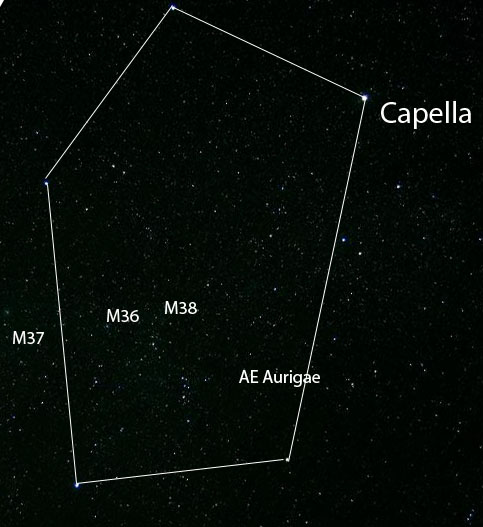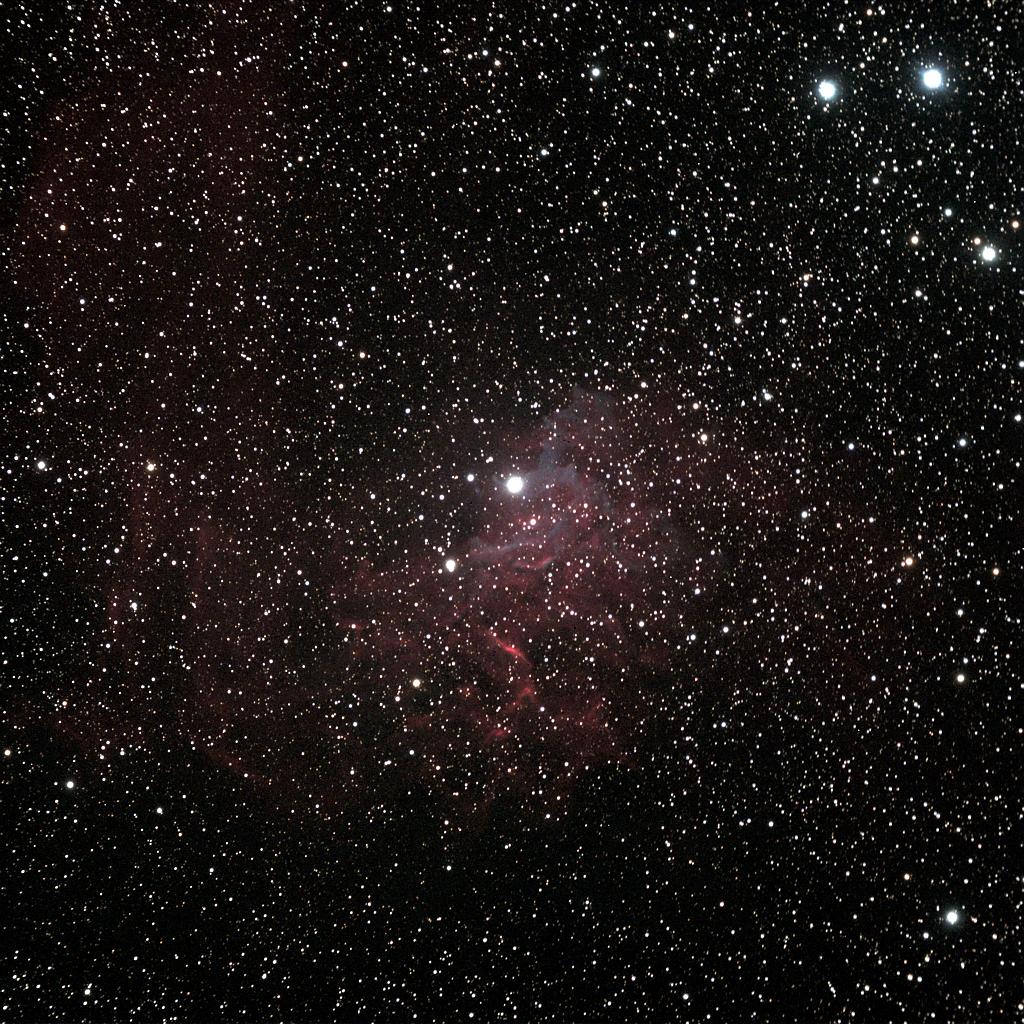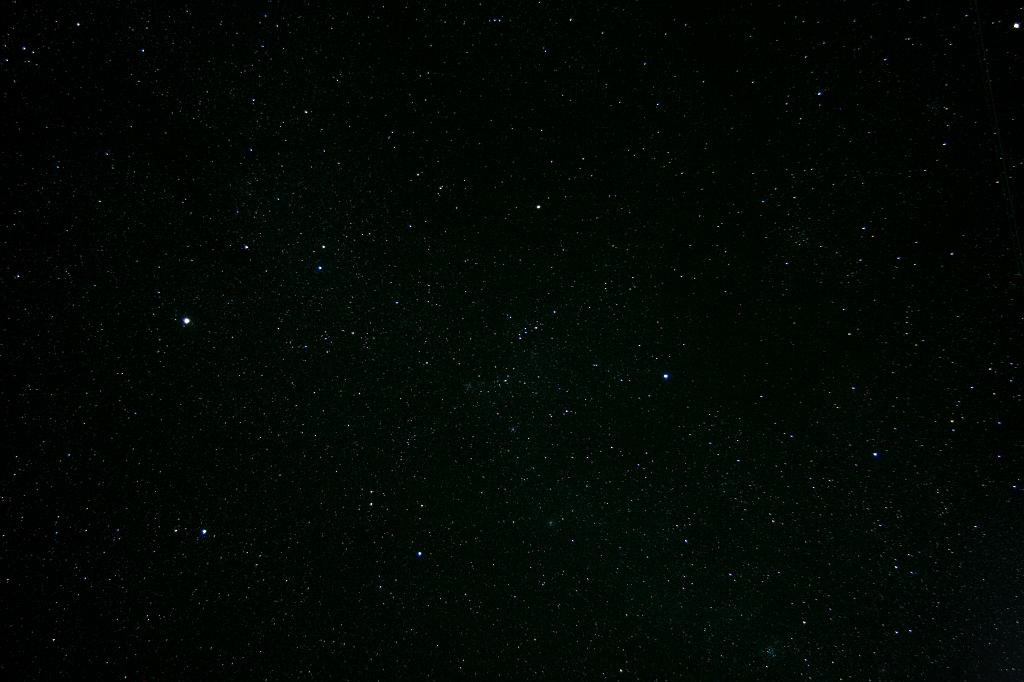Stardate: Saturday November 14, 2009.
Place: Chuckwalla Bench Observing Site
Equipment: 12.5-inch Litebox Reflector, f/5.75 Pierrre Schwaar mirror
Sky conditions: Better than expected (clear, steady, good transparancy, but cold)
Mojo and I try to head out to our favorite dark sky observing spot every new moon Saturday night. Usually several of our Old Town Sidewalk Astronomer friends join us, and usually there are half a dozen telescopes. But this month we were the lone astronomers.
Mojo has been infected by the Astrophotography virus for the past 2 years. Lucky me! I plunder his images and have included many in my monthly What’s Up podcasts. It’s not easy to find good wide field images of the constellations and low/zero power images of celestial objects, and his are really gorgeous. I love Mojo’s images of the galactic “smudges” because they show what deep sky objects really look like through a modest telescope. But he also wants to image the “eye candy” objects up close and personal, and luckily he welcomes an imaging suggestion from me every now and then.

I rotated Mojo's Auriga 120 degrees clockwise & annotated it because this is how I see it in my mind's eye - like a house with a door
So on this particular night, I wanted to observe one really interesting star and one really interesting deep sky object in several of the winter constellations. In Perseus, I observed Eta Persei, a spectacular gold and blue double star, and NGC 1491, a fan shaped emission nebula.
The constellation Auriga is right next to Perseus, so I opened the good book, and by that I mean the Night Sky Observer’s Guide (NSOG) volume 1 (Autumn and Winter) to Chapter 5, Auriga the Charioteer. Under the “Interesting Stars” chapter, variable star AE Aurigae caught my attention, even thought it only garnered a rating of 3 out of 5 stars — meaning it was an “average” viewing object.
AE Aurigae is one of the runaway stars whose proper motion can be traced back to the Orion Nebula. It is about 1500 light-years away and is an unusual O-type star with irregular light variations. It shines with the luminosity of 10,000 suns, but because of its distance is just on the edge of naked eye visability at varying magnitudes from 5.78 to 6.08. The NSOG goes on to say the star illuminates IC 405, the Flaming Star Nebula. Wow! That sounded like a very interesting object to view, despite the so-so rating. I called Mojo over to show him my project and mentioned how difficult the nearby nebula was to see visually. I could just barely see it, after trying with and without my O-lll, H-Beta and UHC filters. Only the UHC filter helped a little, and not very much. He thought it would be a challenging imaging project, and the constellation was in a great spot for astrophotography. I showed him where the object was, just next to a line of 4 stars that make up part of the front door of the “house of Auriga”, sort of where the doorbell should be. An hour of imaging later, we were both blown away the rippling waves, curling tendrils and the red color in the nebula.
Back home the next day I did some more research on the two objects. The Spitzer Space Telescope observed the Flaming Star Nebula, an emission/reflection nebula in infrared wavelengths. Their observations show evidence of a bow shock created by the interaction between the runaway star and the nebular material. The runaway star, AE Aurigae is from the Orion association of O and B type stars. AE Aurigae and Mu Columbae were hurled out of the Orion nebula’s famous Trapezium area before the Trapezium stars were even born! Did one of the stars’ binaries go supernova and did the explosion send these stars hurtling through space in different directions? According to Jim Kaler’s Stars website the collision sent two stars out of the cluster, and the beautiful double star Iota Orionis — the brightest star in Orion’s belt — remained.
AE Aurigae is moving north at 128k/s (80 miles per second) and is now 40 degrees north of Orion in Auriga. Mu Columbae is now 28 degrees to the south, in the constellation Columba, the Dove. That’s the constellation south of Canis Major and Lepus. Standing out under a dark sky and tracing the path from Orion to the runaway star’s location in Auriga was just mind boggling. Then I eyeballed the the path of Mu Columbae from the Orion nebula past bright Sirius down to the dog’s butt of Canis Major, and on down to Columba. Next month I’ll have to try and see the Columba runaway star.
That was a great project for both of us! I really enjoyed observing a wild stellar object which had been studied and imaged by one of our great orbiting observatories. And Mojo enjoyed imaging an object that was practically invisible at the telescope eyepiece, but waiting for its closeup in front of his camera.
Mojo blogs about Pinwheels, Horseheads and Flaming Stars – his projects on the same night.


Down the dog’s butt…. You are too funny !
You mean you have never observed the Dog Butt double and the Dog Butt cluster (NGC2362) Two of my favorites! Woof Woof!
[...] More Fast Moving Stars [...]